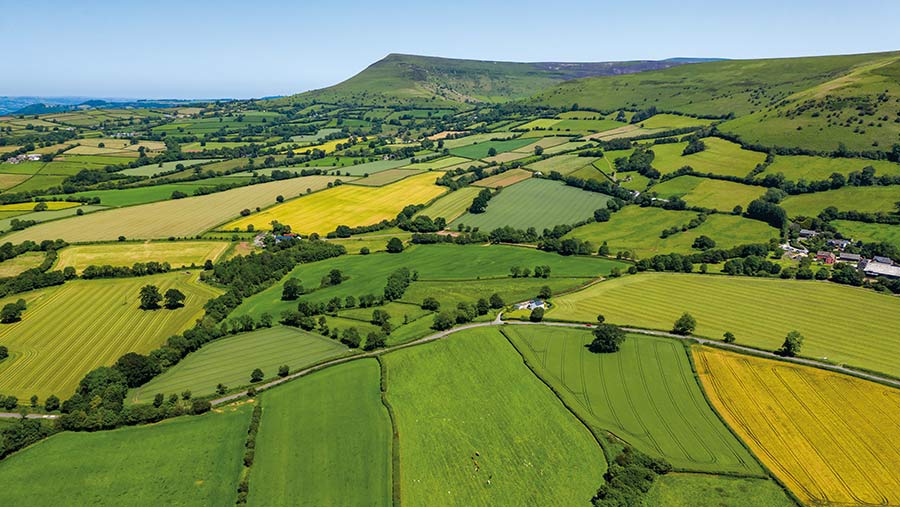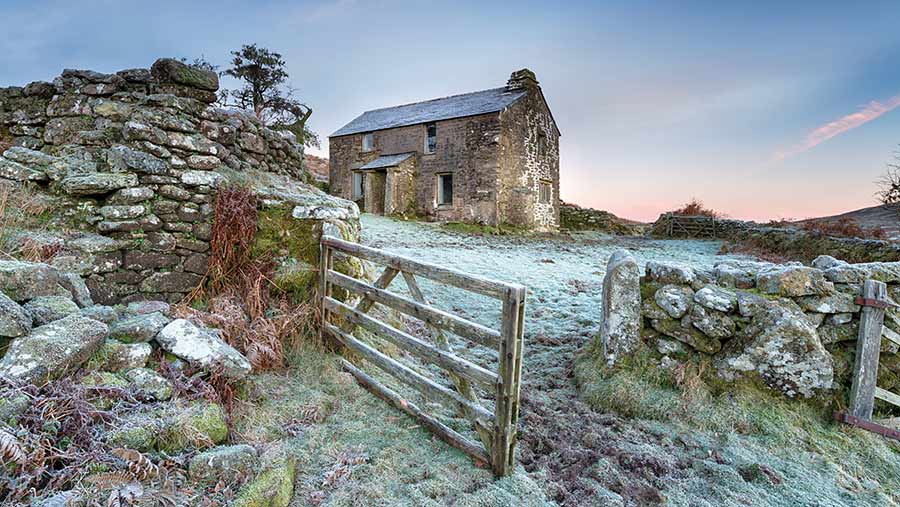Selling a farm in 2023? Tips to make it a smooth process
 © Whitcomberd/Adobe Stock
© Whitcomberd/Adobe Stock Land agents, tax and legal advisers stress that a thorough and strategic approach to farm sales saves time, stress and money.
A high value and high demand market, uncertainty over access to new and unclear support levels, along with farmgate price volatility, all point to the likelihood of a rise in farm sales next year.
These are accompanied by the ever-present traditional reasons for sale – debt, death and divorce.
See also: How to choose the right way to sell your farmland
Whatever the driver for this big decision, there are many considerations in preparing for a sale and generally, the longer the lead time, the better.
Marketing
Making the decision
Selling should not be a spur of the moment decision. Often the best and most genuine sellers are those that enquire in the autumn, reflect over the winter and decide in the spring.
Consider carefully where you will move to and how you will cope with the upheaval.
Presentation
Good-quality marketing and the right sales process is vital. There is no “one size fits all” with farms. A good agent will go through the pros and cons of a sale by private treaty, informal tender and public auction.
Timing
Choose a time when the ground looks dry and crops and stock are flourishing. Making a good first impression really counts, so ensure everything is neat and tidy ahead of viewings.
Maximise value
Set a realistic guide price. Take advice on any development opportunities there might be on the land that could add value.
If so, consider whether it is best to apply for planning permission yourself ahead of the sale or add a clawback clause so you can benefit from future gain in value.
Alternatively, you may want to add a restrictive clause to protect against any future development.
Sources:
• Tom Watson, director, Cundalls
• Charlotte Shepherd, partner and head of property, Berrys
• Mark Griffiths, director, Dyke Yaxley
Legal
Form a strategy early
Choose a solicitor with the right credentials to handle the sale and contact them as early as possible.
Issues such as anti-money laundering legislation are becoming ever more onerous for solicitors and compliance with this may delay the start of the substantive legal work, even for long-standing clients.
Hold a strategy meeting at an early stage with the solicitor, accountant and land agent to ensure all the key advisers agree on the way forward.
For example, will provisions be needed for live and deadstock sales, holdover for cropping or storage in the buildings, or will the property be sold as a going concern.
Review the title deeds
Make sure all of the land is registered. If it isn’t, then register the title before sale, this will save time.
Check whether you have everyone that will be affected by the sale on board and review any covenants which run with the land.
Gather relevant documentation
Locate title deeds, up-to-date farm plans, all tenancy/licence agreements, utilities maps, agreements for government-backed schemes or designations, details of any planning permissions including planning ties or other conditions, and all other information that you think may be relevant.
Consider ordering searches
While these are usually undertaken by the buyer’s solicitor, turnaround times with local authorities vary considerably. Some can produce a search result within a week, others can take many months.
A clause can be added to the contract requiring the buyer to reimburse the costs of the searches on completion.
Services
Check you know where all your services run and who they supply. Do you supply any other properties with water and do they pay for the water they use? What legal agreements are in place?
New purchasers are often wary about taking on water supplies that serve third parties, especially with regard to where the responsibility for maintaining the waterpipes lies.
Do you know where your boundaries are and whose responsibility they are? Have there been any encroachments?
Written agreements, contracts and tenancies
Vendors need to make sure that all tenants, graziers and other occupiers of the land have written agreements in place.
The neighbour who has been using part of a paddock for years on a verbal agreement could cost you time and money when it comes to the conveyancing and the sale.
Legal checklist
You should check the following:
- Planning permissions, listed building consents and building regulations documents
- Wayleave agreements
- Occupancies which may need to be terminated to give vacant possession
- Farm business tenancies, Agricultural Holdings Act tenancies, commercial leases, rental properties
- Employee contracts – will these pass to the buyer under the Transfer of Undertakings (Protection of Employment) regulations or be terminated prior to sale?
- Basic Payment Scheme documentation
- Stewardship agreements, details of payments made
- Easements to be granted/reserved between each lot or for the benefit of retained land
- Covenants to be imposed for the benefit of any other lots or retained land
- Development clawback (overage).
Put as much detail relating to these points as possible in the memorandum of sale/heads of terms. This saves lots of to-ing and fro-ing during the course of the transaction.
Sources:
• Mark Buckerfield, partner, Clarke Willmott
• Charlotte Shepherd, partner and head of property agency, Berrys
• Sophie Clotworthy, associate Woolley and Wallis
See also: How overage agreements work in farmland sales

© Helen Hotson/Adobe Stock
Tax
Consider carefully how property is valued across the farm’s assets.
Capital gains tax
Rates payable on residential property can be as high as 28%. However, the seller’s house, referred to as the principal private residence (PPR), will not attract any tax.
The seller must meet certain criteria proving the house has been their main home, but will then qualify for private residence relief (PRR) at 100%.
This is important to consider because the overall tax liability can be reduced by valuing assets carefully. Put simply, the more that can be sensibly allocated to the value of the main home, the better.
Business asset disposal relief
Formerly known as entrepreneur’s relief, business asset disposal relief (BADR) is an allowance limit on which tax rates of 10% are levied on gains rather than the standard rate of 20%.
Until 2020 when selling and ceasing farming, the lifetime limit was the first £10m of total gains accrued. However, the lifetime limit is now £1m for each individual, for example, each partner in the business.
At least two years ahead of selling, the vendor should look at who is holding the assets to ensure the maximum BADR level is achieved. This timescale can allow for changes to be made if these are needed.
Inheritance tax
Sellers need to be aware of exposure to inheritance tax (IHT) when they do not have a spouse who would qualify for tax relief. In most cases a working farmer will not pay IHT.
However, in circumstances where the farm is sold and the seller then dies before reinvesting the money in a qualifying business asset, the full 40% IHT will be payable.
As soon as the cheque for the property is in the bank, the seller’s estate is exposed to IHT. To protect themselves from this, it is worth the seller considering taking out term life cover until the proceeds can be reinvested.
Where the intention is to gift the proceeds to your children or others, there is a seven-year period before that gift drops out of the estate.
A life assurance policy over that seven years would ensure the amount liable to IHT was protected.
Valuing plant and internal equipment
Consider the value of plant and integral equipment where capital allowances have been claimed in the past. For example, a poultry shed with ventilation and heating systems will have had a value ascribed to these elements.
In a poultry shed 50% of the building’s value may be allocated to the fittings for capital allowance purposes against the owner’s income.
When selling the fixtures, HMRC will want to claw back some of the capital allowance benefit gained in the past from the value of the equipment at sale.
Ideally, then, only a nominal value should be ascribed to the internal fixtures. However, the purchaser will want a higher value to offset against income in the future.
This is often overlooked until it becomes a bone of contention at sale. To ensure time is not wasted, the value must be discussed with accountants and valuers well before the sale goes ahead.
Sources:
• Nick Dee, lead agricultural partner, and Peter Griffiths, tax adviser, Hazlewoods
